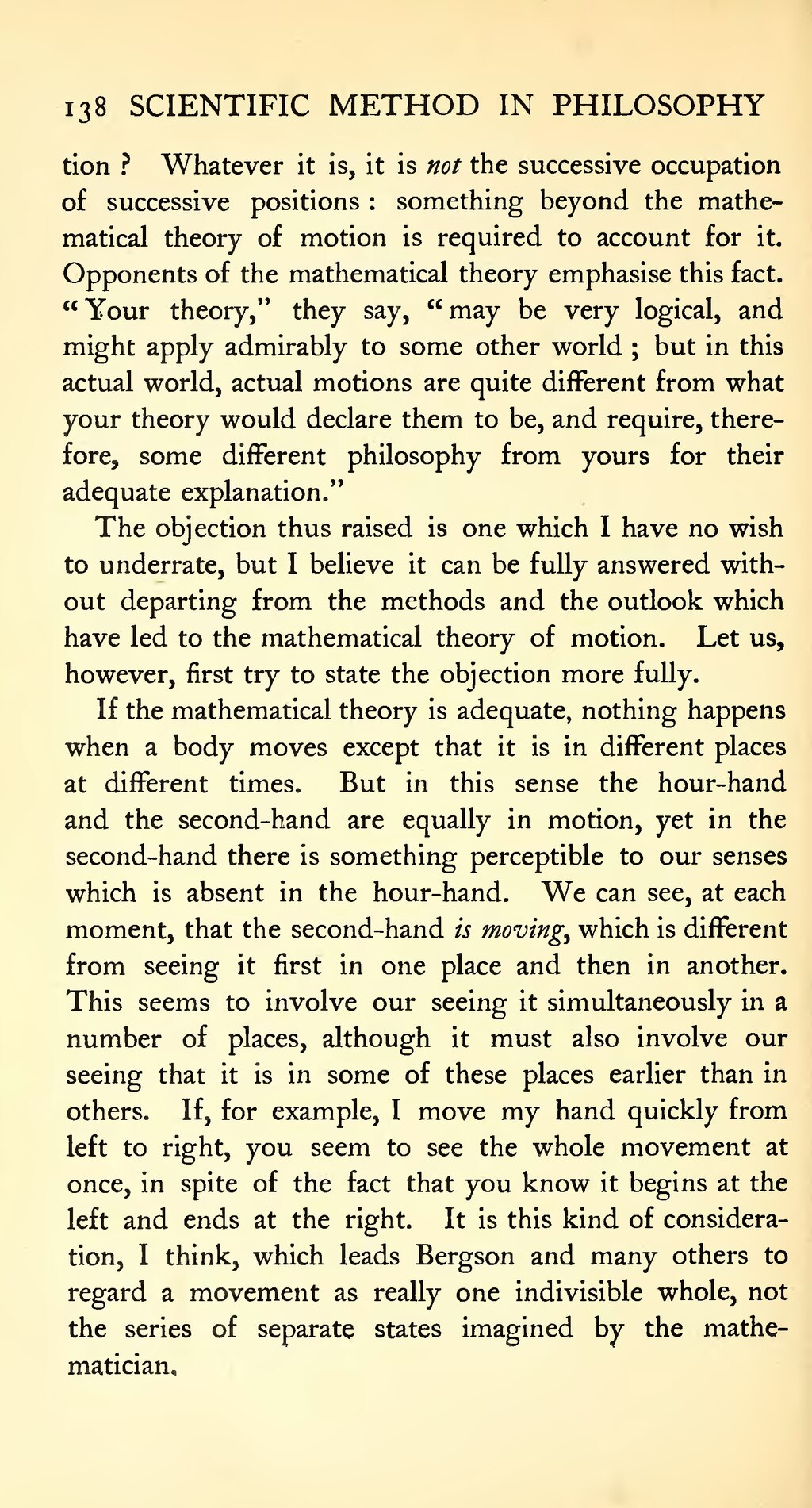tion? Whatever it is, it is not the successive occupation of successive positions: something beyond the mathematical theory of motion is required to account for it. Opponents of the mathematical theory emphasise this fact. “Your theory,” they say, “may be very logical, and might apply admirably to some other world; but in this actual world, actual motions are quite different from what your theory would declare them to be, and require, therefore, some different philosophy from yours for their adequate explanation.”
The objection thus raised is one which I have no wish to underrate, but I believe it can be fully answered without departing from the methods and the outlook which have led to the mathematical theory of motion. Let us, however, first try to state the objection more fully.
If the mathematical theory is adequate, nothing happens when a body moves except that it is in different places at different times. But in this sense the hour-hand and the second-hand are equally in motion, yet in the second-hand there is something perceptible to our senses which is absent in the hour-hand. We can see, at each moment, that the second-hand is moving, which is different from seeing it first in one place and then in another. This seems to involve our seeing it simultaneously in a number of places, although it must also involve our seeing that it is in some of these places earlier than in others. If, for example, I move my hand quickly from left to right, you seem to see the whole movement at once, in spite of the fact that you know it begins at the left and ends at the right. It is this kind of consideration, I think, which leads Bergson and many others to regard a movement as really one indivisible whole, not the series of separate states imagined by the mathematician.
